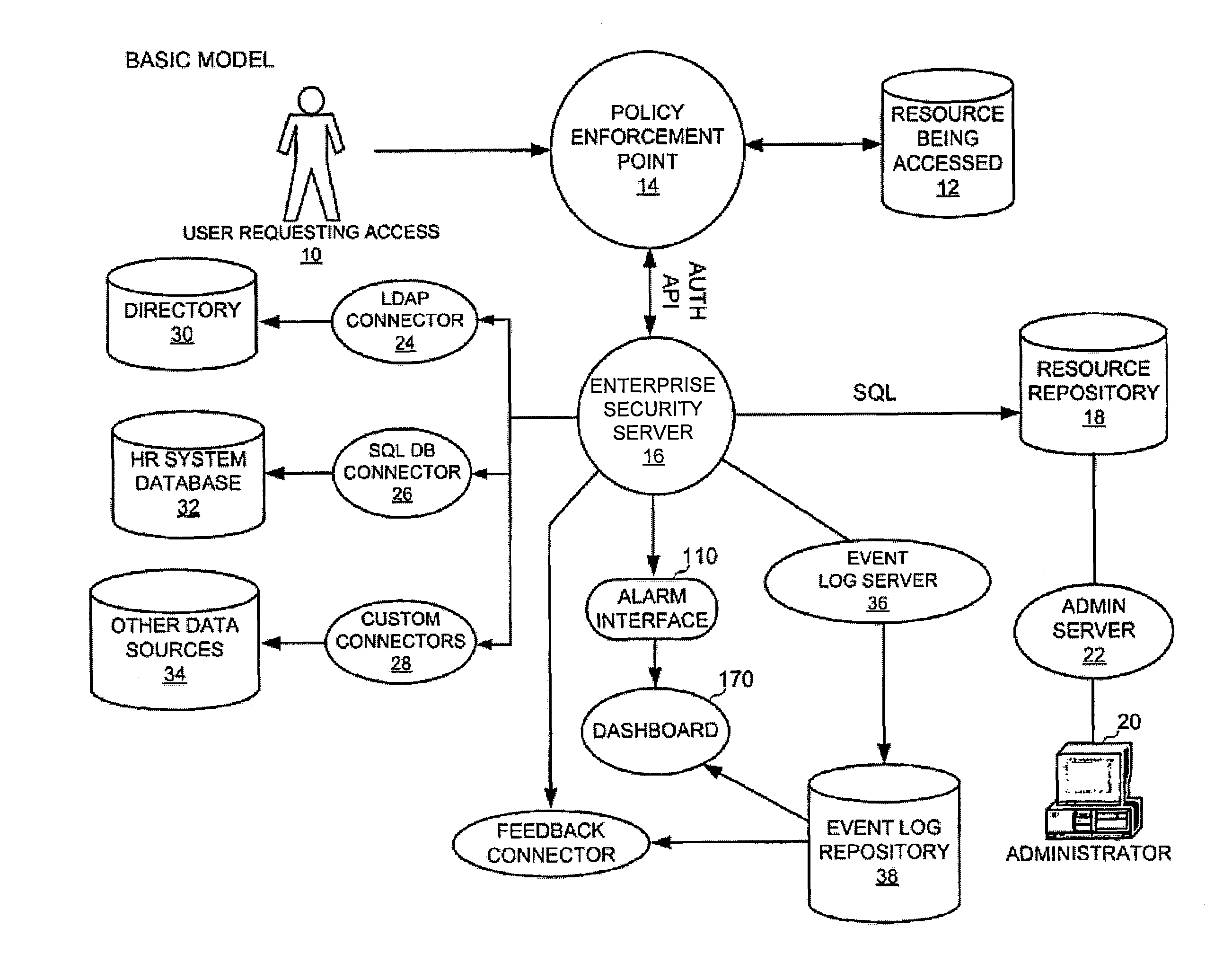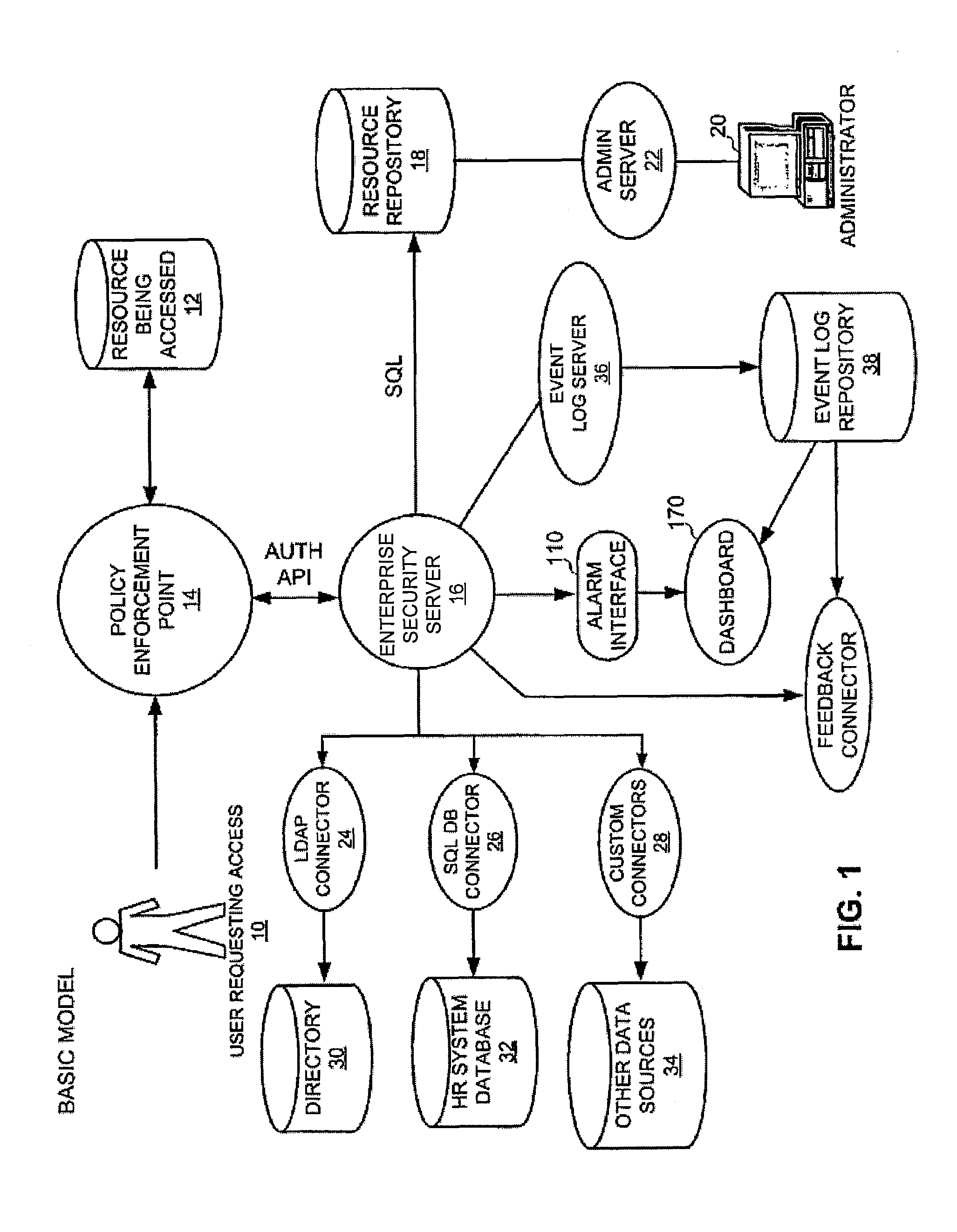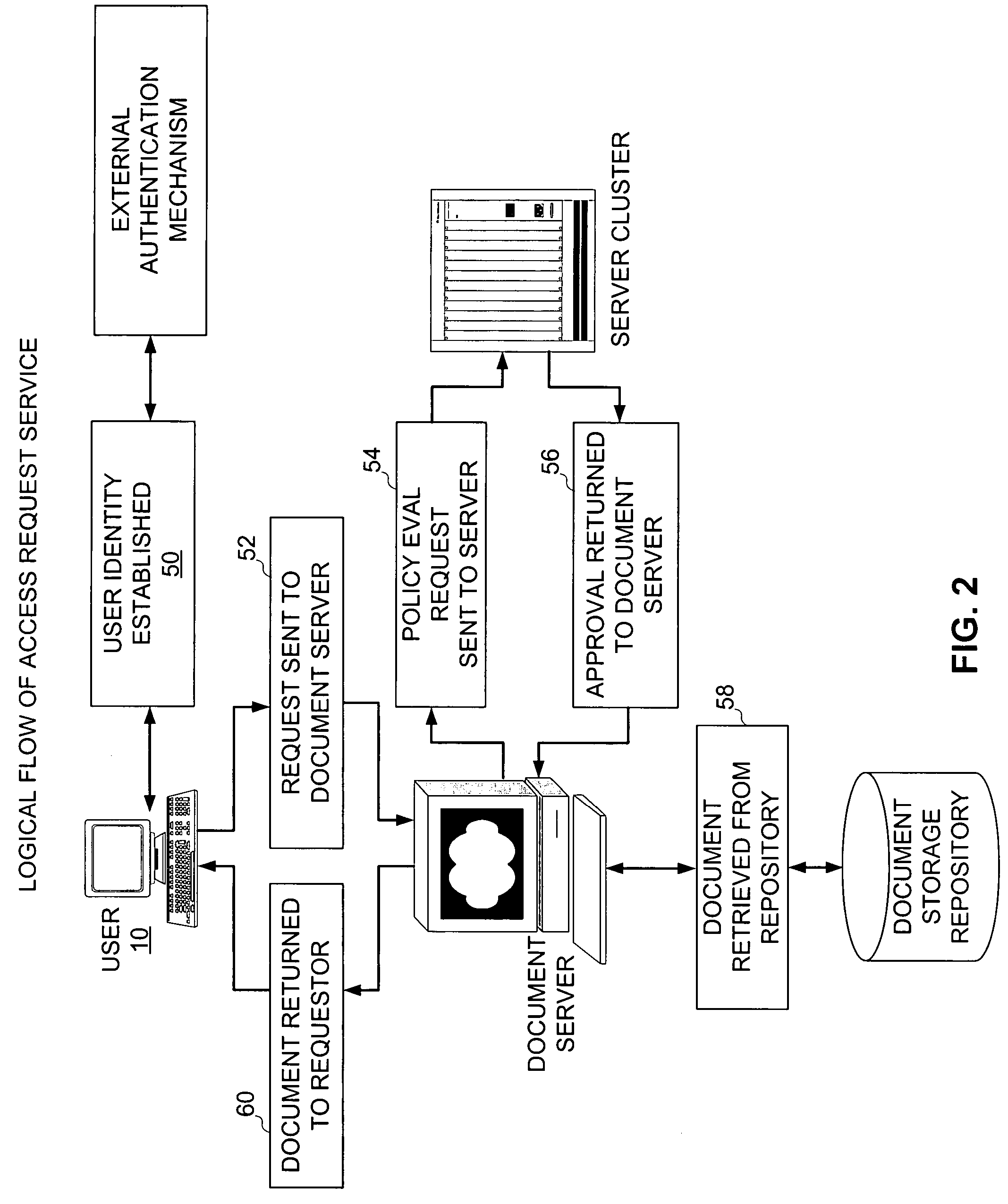Method and system for dynamically implementing an enterprise resource policy
a technology of enterprise resource policy and dynamic implementation, applied in the field of establishing and maintaining security access policies, can solve the problems of increasing system functionality often resulting in lower security levels, limiting the ability of companies to grow, and reducing the degree of security of individual users and customers, so as to achieve limit capabilities and scale
- Summary
- Abstract
- Description
- Claims
- Application Information
AI Technical Summary
Benefits of technology
Problems solved by technology
Method used
Image
Examples
Embodiment Construction
[0024]Preferred embodiments of the present invention are illustrated in the FIGUREs, like numerals being used to refer to like and corresponding parts of the various drawings.
[0025]A sample architecture for the use of the enterprise security policy manager is depicted in FIG. 1. Here, user 10 wishes to access a secured resource from the corporate repository. User 10 establishes his electronic identity by authenticating (logging in) to the policy enforcement point 14.
[0026]User 10 then makes a request of the policy enforcement point 14 to retrieve the information / service / access. Server 16 receives the request. Server 16 analyzes the request to determine which resource 12 is being accessed. To evaluate the request, policy enforcement point 14 sends a request for policy evaluation to enterprise security server 16. This request contains both the identity of the user and the name of the resource being accessed.
[0027]Enterprise security server 16 uses the resource name to retrieve the pol...
PUM
 Login to View More
Login to View More Abstract
Description
Claims
Application Information
 Login to View More
Login to View More - R&D
- Intellectual Property
- Life Sciences
- Materials
- Tech Scout
- Unparalleled Data Quality
- Higher Quality Content
- 60% Fewer Hallucinations
Browse by: Latest US Patents, China's latest patents, Technical Efficacy Thesaurus, Application Domain, Technology Topic, Popular Technical Reports.
© 2025 PatSnap. All rights reserved.Legal|Privacy policy|Modern Slavery Act Transparency Statement|Sitemap|About US| Contact US: help@patsnap.com



